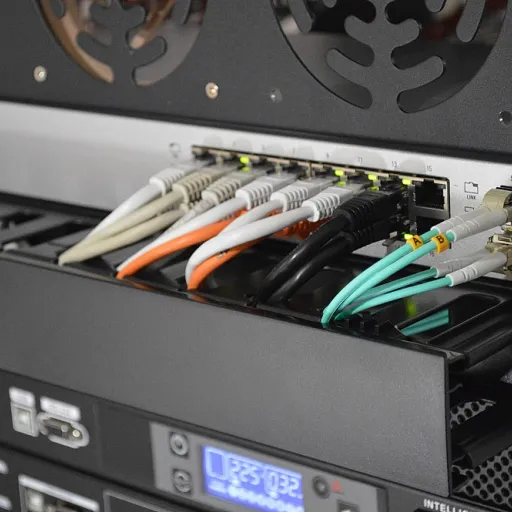
Understanding Data Governance Services
Defining the Core of Data Governance
Data governance services are essential for any organization aiming to manage its data assets effectively. At its core, data governance involves the establishment of policies, procedures, and standards to ensure data quality, security, and compliance. This comprehensive approach helps businesses maintain a robust data management framework, which is crucial for informed decision-making and operational efficiency.
Key Components of Data Governance
To understand data governance, it's important to recognize its key components:
- Data Quality: Ensuring that data is accurate, complete, and reliable is fundamental. High-quality data supports better analytics and decision-making.
- Compliance: Adhering to legal and regulatory requirements is a critical aspect. This involves implementing measures to protect sensitive information and ensure privacy.
- Security: Protecting data from unauthorized access and breaches is paramount. A strong security framework helps safeguard organizational data.
- Metadata Management: Managing metadata effectively allows organizations to understand data lineage and context, which enhances data integration and usage.
The Importance of a Governance Framework
A well-structured governance framework is vital for managing data across the organization. It provides a clear roadmap for data management integration and helps align data initiatives with business objectives. By establishing roles and responsibilities, a governance framework ensures accountability and facilitates change management within the company.
For businesses looking to enhance their operational efficiency, implementing effective data governance services is a strategic move. To explore how innovative software solutions can further enhance logistics and business operations, you can read more about it here.
The Role of Data Governance in Software Development
Integrating Data Governance into Software Development
In the realm of software development, data governance plays a pivotal role in ensuring that data assets are managed effectively and securely. As organizations increasingly rely on data-driven decision making, the integration of robust data governance frameworks becomes essential. This integration helps maintain data quality, compliance, and security throughout the software development lifecycle.
One of the key aspects of data governance in software development is the establishment of a comprehensive governance program. This program should outline clear policies and procedures for data management, ensuring that all stakeholders understand their roles and responsibilities. By implementing a governance framework, companies can ensure that data is consistently managed and protected, reducing the risk of data breaches and ensuring compliance with regulatory requirements.
Leveraging Tools and Technologies
To effectively integrate data governance into software development, organizations must leverage advanced tools and technologies. These tools facilitate data management, metadata management, and data lineage tracking, providing developers with the insights needed to manage data effectively. By utilizing cloud-based solutions, companies can enhance their data governance capabilities, ensuring seamless integration and scalability.
Furthermore, the use of analytics tools can help organizations monitor data quality and compliance in real-time. This proactive approach to data governance allows businesses to identify and address potential issues before they escalate, ensuring that data remains a valuable asset throughout the development process.
For more insights on how automation is transforming industries, you can explore the evolution of Walmart's automation services.
Ensuring Effective Change Management
Change management is another critical component of integrating data governance into software development. As organizations implement new governance tools and processes, it is essential to ensure that all team members are adequately trained and prepared for these changes. This involves providing ongoing education and support to help employees adapt to new data management practices.
By fostering a culture of continuous improvement and collaboration, companies can ensure that their data governance initiatives are successful. This approach not only enhances business efficiency but also strengthens the organization's ability to manage data effectively in an ever-evolving technological landscape.
Challenges in Implementing Data Governance
Overcoming Obstacles in Data Governance Implementation
Implementing a robust data governance program is no small feat. Organizations often face a myriad of challenges that can hinder the effectiveness of their governance framework. One of the primary hurdles is ensuring data quality across diverse data assets. Inconsistent data quality can lead to poor decision making, which can significantly impact business operations.
Another challenge lies in the integration of governance tools with existing systems. Many companies struggle with the seamless integration of new governance tools into their current data management infrastructure. This can be particularly challenging for organizations that rely heavily on cloud-based solutions, where data security and compliance are paramount.
Change management is also a critical aspect of implementing data governance. Organizations must foster a culture that values data governance and understands its importance. This requires continuous education and training to help employees adapt to new processes and tools. Additionally, metadata management and data lineage are often overlooked but are crucial for tracking and managing data effectively.
Furthermore, the governance framework must be adaptable to evolving business needs and technological advancements. This requires a flexible approach to data governance that can accommodate changes in the organization’s data landscape. For more insights on how to navigate these challenges, you might find it useful to explore alternatives to traditional systems, such as those discussed in this article.
Technological Innovations in Data Governance
Innovative Tools and Technologies Transforming Data Governance
In the rapidly evolving landscape of data governance, technological innovations play a pivotal role in enhancing the efficiency and effectiveness of governance frameworks. As organizations strive to manage data more effectively, several cutting-edge tools and technologies have emerged to support robust data governance strategies.
One of the most significant advancements is the integration of cloud-based solutions. These platforms offer scalable and flexible environments that facilitate seamless data management and governance. By leveraging cloud technologies, companies can ensure data accessibility and security while maintaining compliance with regulatory standards. This shift to the cloud also supports the integration of various data sources, enabling comprehensive data analytics and decision-making processes.
Another critical innovation is the development of advanced metadata management tools. These tools help organizations maintain a clear understanding of their data assets by providing detailed insights into data lineage and quality. By automating metadata management, businesses can improve data accuracy and consistency, which is essential for effective governance.
Furthermore, the rise of artificial intelligence (AI) and machine learning (ML) technologies has revolutionized data governance. AI-driven analytics can identify patterns and anomalies in data, helping organizations to proactively address potential issues and ensure data quality. These technologies also enable predictive analytics, allowing companies to anticipate future trends and make informed decisions.
Security remains a top priority in data governance, and innovations in cybersecurity tools are crucial for protecting sensitive information. Advanced security measures, such as encryption and access controls, are integrated into governance frameworks to safeguard data against unauthorized access and breaches.
Finally, the implementation of collaborative platforms enhances communication and coordination among stakeholders involved in data governance. These platforms facilitate the sharing of insights and best practices, fostering a culture of continuous improvement and innovation within the organization.
As businesses continue to navigate the complexities of data governance, embracing these technological innovations will be essential for maintaining a competitive edge and ensuring the integrity of their data management programs.
Best Practices for Effective Data Governance
Implementing a Robust Data Governance Framework
To ensure the success of a data governance program, businesses must adopt a robust framework that aligns with their organizational goals. This involves a comprehensive approach to managing data assets, ensuring data quality, and maintaining compliance with regulatory standards. A well-structured governance framework facilitates effective decision-making and enhances data security.
Integration of Advanced Governance Tools
Organizations should leverage advanced governance tools to streamline data management processes. These tools help in metadata management, data lineage tracking, and data analytics, providing a holistic view of the organization's data landscape. By integrating these tools, companies can enhance data quality and ensure compliance with governance standards.
Fostering a Culture of Data-Driven Decision Making
For effective data governance, it's crucial to foster a culture where data-driven decision-making is the norm. This involves training employees on the importance of data governance and how it impacts business operations. Encouraging a data-centric mindset ensures that everyone in the organization understands the value of data assets and the role they play in achieving business objectives.
Ensuring Continuous Improvement and Adaptability
Data governance is not a one-time initiative but a continuous process that requires regular updates and improvements. Organizations must remain adaptable to changes in technology and regulatory requirements. By adopting a proactive approach to change management, businesses can ensure their governance framework remains relevant and effective.
Collaboration Across Departments
Effective data governance requires collaboration across various departments within an organization. By involving stakeholders from different areas, companies can ensure a comprehensive approach to data management and integration. This collaborative effort helps in aligning governance objectives with business goals, ensuring a unified approach to managing data.
Future Trends in Data Governance Services
Emerging Trends Shaping Data Governance
As businesses continue to rely heavily on data-driven decision making, the landscape of data governance is evolving rapidly. Organizations are increasingly recognizing the need for robust data governance frameworks to manage data effectively and ensure compliance with regulatory requirements. Here are some key trends that are expected to shape the future of data governance services:
- Cloud Integration: With the shift towards cloud-based solutions, data governance programs are focusing on seamless integration with cloud platforms. This approach helps organizations manage data assets efficiently while ensuring data security and compliance.
- Advanced Analytics and AI: The use of advanced analytics and artificial intelligence is becoming integral to data governance. These technologies help in enhancing data quality and metadata management, providing deeper insights into data lineage and improving overall governance frameworks.
- Emphasis on Data Quality: Ensuring data quality remains a top priority for organizations. Effective data governance tools are being developed to continuously monitor and improve data quality, which is crucial for accurate analytics and informed decision making.
- Enhanced Security Measures: As data breaches become more sophisticated, companies are investing in stronger security measures within their data governance strategies. This includes implementing comprehensive security protocols to protect sensitive data and ensure compliance with data protection regulations.
- Integration of Governance Tools: The integration of various governance tools is becoming more streamlined, allowing for better management of data across different platforms. This integration supports a holistic approach to data governance, making it easier for organizations to manage their data assets effectively.
- Focus on Change Management: Successful data governance requires effective change management strategies. Organizations are adopting approaches that facilitate smooth transitions and ensure that all stakeholders are aligned with the governance program objectives.
By staying ahead of these trends, businesses can enhance their data governance strategies, ensuring they remain competitive and compliant in an ever-evolving digital landscape.















